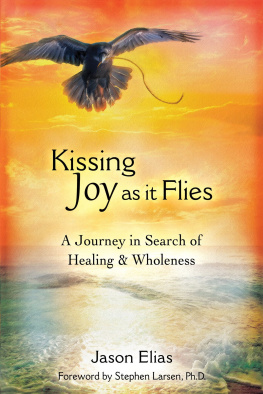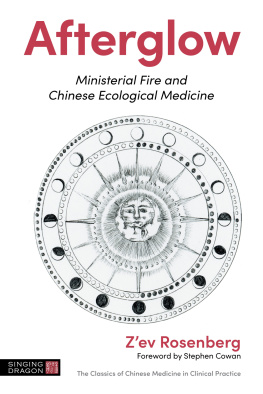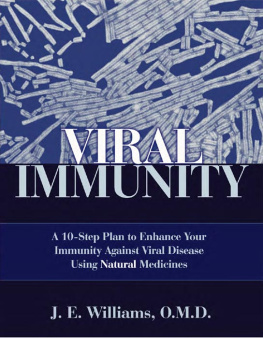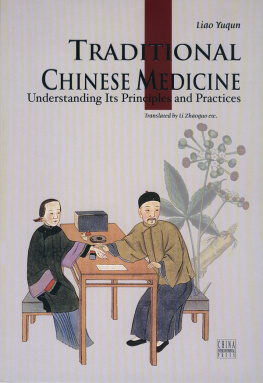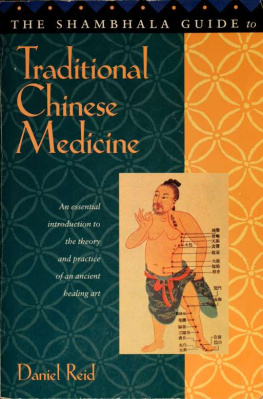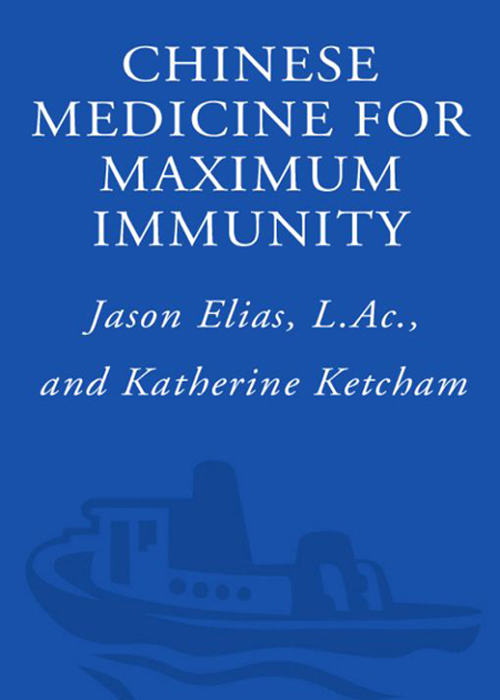
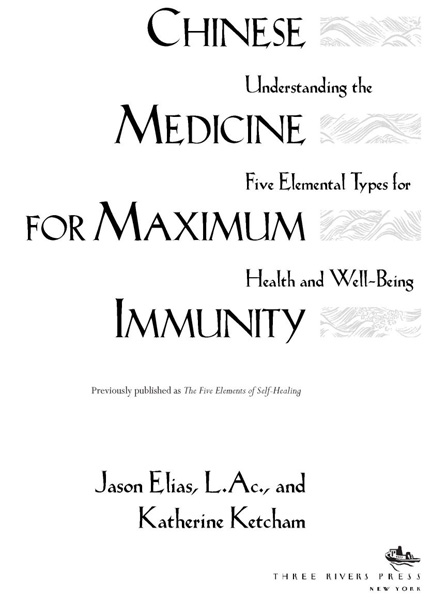
Table of Contents
To our children:
Adam Elias
Robyn, Alison, and Benjamin Spencer
ACKNOWLEDGMENTS
Every book is a journey, full of winding roads and countless adventures. The pathway to this book was paved thousands of years ago by ancient Chinese sages such as Lao-tzu, Confucius, Huang Di, and Qi Bo, who helped create the philosophical and practical system we now call traditional Chinese medicine. Many modern healers have followed their bright lights to illuminate the way. Those who have made our journey easier by offering expert advice and insights from their own experience include Leon Hammer, Bob Duggan, Mark Seem, Ted Kaptchuck, Simon Mills, Frank Lipman, M.D., Doug Heller, M.D., Richard Nagle, M.D., and Perle Besserman.
I give special thanks to those who have combed the manuscript and offered valuable suggestions: Steve Cowen, M.D., and Larry Baskind, M.D., for their encouragement and critical review of the medical data; Fara Kelsey for her insight and critique of the herbal sections; Bob Lesnow and Ellen Marshall for their expertise on clinical nutrition and the use of supplements; Amarish James Caruso for his insights into the yogic connection to the five elements; and Marc Gross-man for his general support and critical support. And an extra-special thanks to Berkana Gervais for her unending support through this process.
For their support, camaraderie, and professional guidance we owe a deep debt of gratitude to our friends and colleagues at Integral Health Associates: Bob Lesnow, David Lester, Ellen Marshall, Kady Bray, Lynn Walcott, and Marc Gross-man, with special thanks to Marc for his insights on vision.
We are deeply indebted to our literary agents, Janis Vallely and Jane Dystel, who have advised and encouraged us countless times in the three years spent researching and writing this book.
At Harmony Books our sincere thanks go to all who have played a part in the creation of this book, especially Leslie Meredith for her commitment to the idea from the very beginning, and Andrew Stuart, who shepherded us through the final stages.
Our greatest debt, as always, is to our families: Jasons mother, Betty Elias; his wife, Brigit; and his son, Adam; and Kathys mother, Joan Ketcham; her husband, Patrick Spencer; and her children, Robyn, Alison, and Benjamin Spencer. Their love has guided our steps from beginning to end.
Introduction by Jason Elias
THE JOURNEY OF A THOUSAND MILES
Prevent trouble before it arises.Put things in order before they exist.The giant pine treegrows from a tiny sprout.The journey of a thousand milesstarts from beneath your feet.
Tao Te Ching
I will never forget the first time I read The Yellow Emperors Classic of Medicine, a five-thousand-year-old book that describes the philosophical foundation and practical techniques of traditional Chinese medicine. It was the summer of 1968, the first of several summers I spent at Esalen Institute in Big Sur, California, studying with such luminaries as Joseph Campbell, Alan Watts, and Ilana Rubenfeld and investigating the healing powers of the body, mind, and spirit.
That particular summer marked the beginning of my adventures into the world of Eastern philosophy and ancient healing techniques. In the late afternoon after class and discussion group, Id walk to the cliffs overlooking the beach, sit down in the shade of the wind-bowed cedars, and read the The I Ching, the Tao TeChing, and The Yellow Emperors Classic of Medicine. Losing myself in the gentle wisdom of the ancient sages, I felt as if I understood for the first time the exquisite harmony and continuity of life, where night always follows day, the rising moon shadows the setting sun, and the present rests on the enduring foundation of the past. The same sun rose and set on Confucius, Lao-tzu, Huang Di, and Qi Bo, and the same ocean lapped at the edges of their country as they searched for answers to the questions that disturbed my own peace of mind.
One of my favorite passages in The Yellow Emperors Classic of Medicine occurs on the very first page, when Huang Di, the Yellow Emperor, asks his minister Qi Bo why people in the days of old enjoyed longer, happier lives. Does the world itself change from one generation to the next, he asks, or have people forgotten how to live in harmony with the enduring laws of nature? Qi Bo gently answers the young emperors questions, speaking at length about the many dramatic changes in lifestyle and philosophy that have contributed to the present predicament of chronic disease, premature aging, and a general state of disharmony.
In the past, Qi Bo observes, people practiced the Tao, the Way of Life...
They understood the principle of balance, of yin and yang, as represented by the transformation of the energies of the universe. Thus, they formulated practices such as Dao-in, an exercise combining stretching, massaging, and breathing to promote energy flow, and meditation to help maintain and harmonize themselves with the universe. They ate a balanced diet at regular times, arose and retired at regular hours, avoided overstressing their bodies and minds, and refrained from overindulgence of all kinds. They maintained well-being of body and mind; thus, it is not surprising that they lived over one hundred years.
These days, people have changed their way of life. They drink wine as though it were water, indulge excessively in destructive activities, drain their jingthe bodys essence that is stored in the kidneysand deplete their qi [vital energy]. They do not know the secret of conserving their energy and vitality. Seeking emotional excitement and momentary pleasures, people disregard the natural rhythm and order of the universe. They fail to regulate their lifestyle and diet, and sleep improperly. So it is not surprising that they look old at fifty and die soon after.
This conversation took place nearly five thousand years ago, yet I heard the same concerns being raised at Esalen that summer, and I hear them repeated with even more urgency today. Health care practitioners, philosophers, environmentalists, and concerned citizens are still pondering the connections between the rise in chronic illnesses and changing lifestyle patterns. Why, we wonder, is our health declining? In what ways does our modern lifestyle contribute to premature aging and chronic, degenerative illness? What can we do to restore the natural order and live in peace and harmony as people did in the days of old?
As a thoroughly modern healer trained in both Eastern and Western techniques, I know too well that the problems we face today are infinitely more complicated and life-threatening than they were in the days of Huang Di and Qi Bo. Unlike our ancient ancestors, we live in a world that is slowly but surely being poisoned by technology, industry, and human encroachment on the natural world. A few statistics aptly illustrate the magnitude of todays American environmental dilemmas: Over sixty percent of the population150 million Americanslive in areas where carbon monoxide levels and ozone pollution are considered unsafe; every year industry releases more than 2.4 billion pounds of hazardous chemicals into our atmosphere; air pollution is responsible for an estimated 50,000 premature deaths every year; according to a study by the Environmental Protection Agency, up to 1,700 cancer deaths each year can be attributed to toxic air pollution. The risk of health problems due to air pollution is six times greater for children. Every year more than 250,000 children suffer from serious respiratory problems due to air pollution. In a recent EPA survey of large public water systems served by groundwater, forty-five percent were found to be contaminated with industrial solvents, agricultural fertilizers or pesticides, or other toxic synthetic chemicals.
Next page

